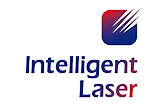The laser vision sensor scans the weld seam through laser stripes to obtain the cross-sectional area of the weld seam, the gap of the weld seam, and the height of the left and right edges of the weld seam. It is equipped with an advanced robot interface to transmit data to the robot. The robot can adjust the welding swing, swing frequency, swing left and right dwell time, welding speed, welding current and voltage in real time according to the weld seam section parameters scanned by the laser tracking vision sensor, so as to achieve high-speed, high-quality adaptive welding.
Ⅰ. The principle of laser seam tracking system
The laser tracking robot adaptive welding system is mainly composed of five parts: robot, operating device, detection head, detection head processor, and computer.
The laser seam tracking sensor adopts the principle of laser triangular reflection, that is, the laser beam is amplified to form a laser line, which is projected onto the surface of the measured object. The reflected light is projected onto the imaging matrix through a high-quality optical system. Distance (Z-axis) and positional information along the laser line (X-axis) of the measured surface. By moving the object under test or the probe of the profiler, a set of three-dimensional measurements can be obtained. The obtained information can be used for seam search and positioning, seam tracking, adaptive welding parameter control, seam shape detection, and real-time transmission of information to the manipulator unit to complete various complex welding, avoid welding quality deviation, and realize intelligent welding.
Ⅱ. Advantages of laser seam tracking system
1. Omit a lot of manual teaching operations, making robot welding easier
For traditional welding, a lot of teaching work is required during the welding process, especially for workpieces with large deformations, which are difficult to fully automate welding. But the industrial robot seam tracking system based on the laser profile sensor solves this problem well. Personnel do not need to repeatedly teach the system to work stably.
2. It can realize the identification of various conventional welds
Using the expert recognition mode for conventional welds can locate the welding position relatively accurately, and the expansion of weld types is also relatively convenient, and the recognition method can be flexibly adjusted according to the needs of the site.
3. Facilitate the expansion of welding automation
The industrial robot seam tracking system based on the laser vision seam tracking sensor can not only guide accurate welding in the welding process, but also have a certain space for the quality inspection of the seam after welding.
